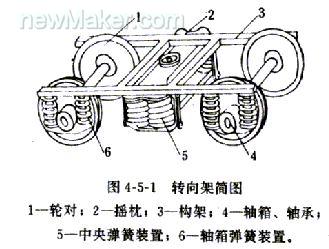1) process equipment design


过程设备设计
1.
Teaching reform in the process equipment design;


过程设备设计课程的教学改革
2.
The application of virtual design in process equipment design;


虚拟设计在过程设备设计中的应用
3.
Exploration and Practice of Teaching Reform for the Process Equipment Design


过程设备设计课程教学改革的探索与实践
2) process equipment


过程设备
1.
Based on some examples, the idea regarding to optimization design in process equipment was proposed in this paper.
通过案例提出传统过程设备设计的优化设计观点,同时,还提出设计者与用户(包括制造者)协调优化设计的观点。
2.
This article has described the technical concept and the characteristic of CAD/CAM technique,as well as the detail application for the optimization of the material selection of the process equipment,the design optimization and the manufacturing optimization.
介绍了CAD/CAM技术的概念、特点及其在过程设备的选材优化、设计优化和制造优化中的具体应用。
3) process design


过程设计
1.
A parallel EBA process design strategy considering the influences of bio - particles in feedstock was obtained, which optimizes the target protein capacity and restrain the bio - particles adsorption on the adsorbent together in order to ensure the stable and efficient EBA processes.
针对常规扩张床吸附过程开发的薄弱环节,分析细胞或细胞碎片等生物质颗粒杂质对扩张床吸附的影响及评价手段,提出并行过程设计策略——兼顾目标物的吸附和生物质颗粒的影响,确保扩张床吸附过程的高效率实施。
2.
Environmentally friendly process design is becoming a key research issue in process system engineering nowadays.
以环境和经济为目标的过程设计是过程系统工程的重要研究内容。
3.
The expert system for the process design of mixing equipment is implemented through blackboard-based framework with integration of multiple cooperative knowledge sources to coordinate the complex problem solving.
此专家系统的结构和知识处理的方法具有较强的灵活性,非常适用于复杂的工业过程设计领域。
4) design procedure


设计过程
1.
Based on the analyzing of information fusion system engineering,the design procedure and describing methods of the design products are researched.
在分析信息融合系统工程方法的基础上,对信息融合系统的设计过程及设计产品描述方法进行了研究,分别研究了应用体系结构设计、系统体系结构设计及数据融合节点设计,以及各自的设计产品的描述方法,并提出了相应设计结果的描述元模型。
2.
QFD is a key quality engineering technology and can improve the design procedure effectively.
质量功能展开(QFD)是一种核心的质量工程技术,是一种产品开发和质量保证的方法论,可以有效地改善设计过程,及设计—施工接口,可以极大地提高住宅项目的质量和降低费用。
3.
The optimization management commences with optimizing combination of design procedures and the system management focus on the continuous optimization of procedures.
优化管理从设计过程的优化组合着手,系统管理重在过程连续优化。
5) design process


设计过程
1.
Research on active knowledge assistant system oriented mechanical design processes;


面向机械设计过程的主动知识辅助系统研究
2.
The Concept Design Process of Product Family Based on Function Flow;


基于功能流的产品族概念设计过程研究
3.
Stakeholders-oriented engineering design process Analysis;


面向利益相关者的工程设计过程分析
6) machine/statistical process control


设备/统计过程控制
补充资料:产品开发过程中的设计原理及应用实例
铁路车辆大致可以分为车体、转向架、连接缓冲装置等部分。转向架是铁路车辆的走行部分,它的作用是承受车体上部的重量,传递牵引力和制动力,缓和线路对车辆的冲击。转向架一般包括轮对轴箱装置、弹性悬挂装置、构架和侧架、基础制动装置、车体支承装置等部分(如图1)。目前,我国铁路货车的主型转向架是转8A型转向架,包括:轴承、轮对、侧架、锲块、摇枕、枕簧、滑槽式基础制动装置、旁承及下心盘等主要零部件组成。

转向架的设计一般要经过设计参数、有限元分析和动力学性能校核三个步骤,目前的设计活动遵循“设计、分析、更改”的形式,即进行有限元分析或动力学性能校核发现不能满足要求,再返回设计部门进行修改。由于涉及的参数较多,参数之间的耦合关系也比较复杂,转向架结构参数的设计往往需要较多时间。尤其是结构参数对于车辆的动力学性能的影响,往往只能依靠设计人员的经验来进行判断,当模型比较复杂时,容易造成设计人员判断失误,工程更改则带来产品开发周期延长,质量水平下降等问题。
因此,需要为设计人员提供一种工具,使他们在进行结构参数的设计计算时,能够直观的理解参数调节对于动力学性能的影响。下面用一个简单的举例来说明如何用设计原理系统指导参数调节。
转向架中的弹簧减振器被作为关键部件来处理,对其进行行为仿真和原理解释,但是设计人员在完成弹簧和减振器的参数设计以后对车辆的振动性能进行分析。车辆振动系统的简化模型中,图2(a)只考虑有非线性阻尼的垂直自由振动,图2(b)是弹簧减振器的示意图,弹簧减振器的参数有二十多个,包括簧条直径、弹簧圈数、弹簧刚度、摩擦面角、摩擦面系数等,根据仿真需要进行适当简化。

*车体离开平衡位置的距离;
STEP2)什么影响车体离开平衡位置的距离?
说明:补充资料仅用于学习参考,请勿用于其它任何用途。
参考词条